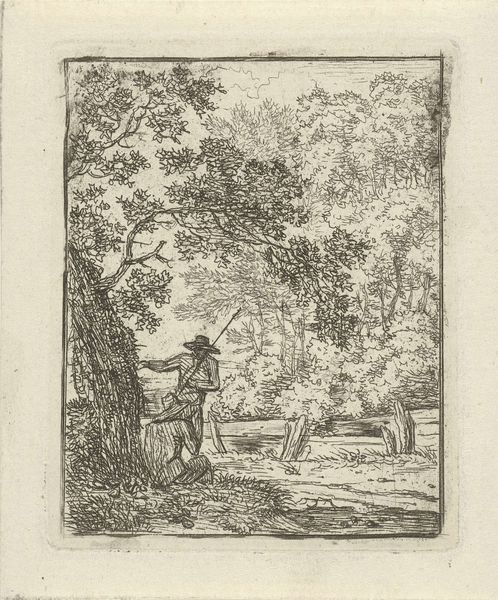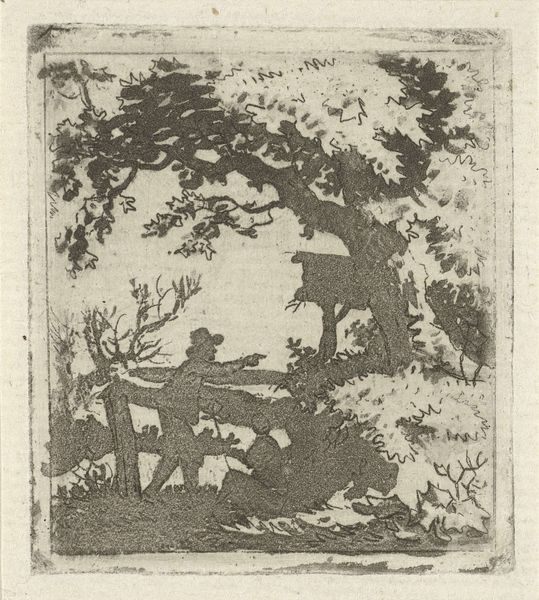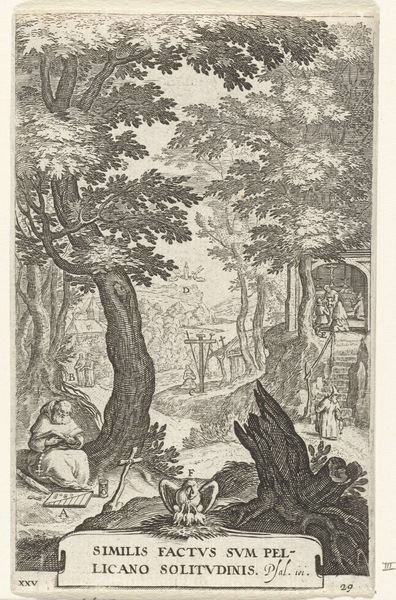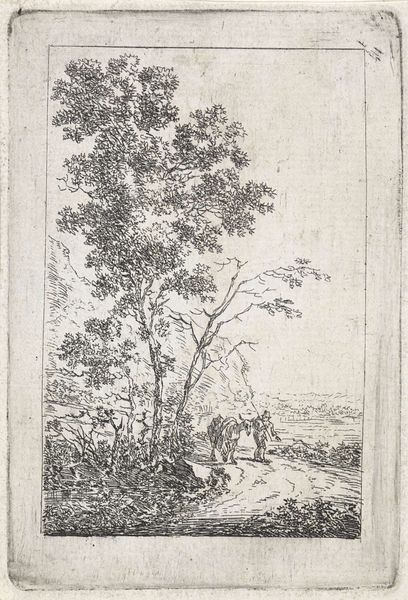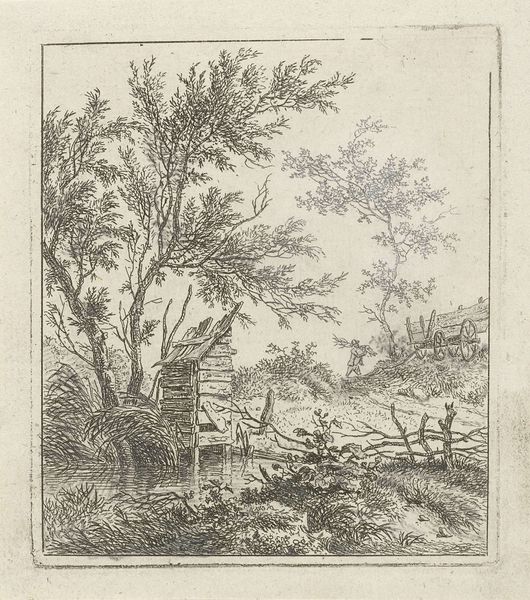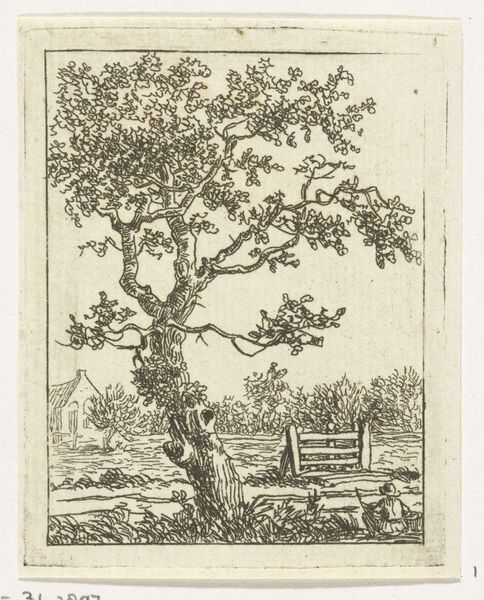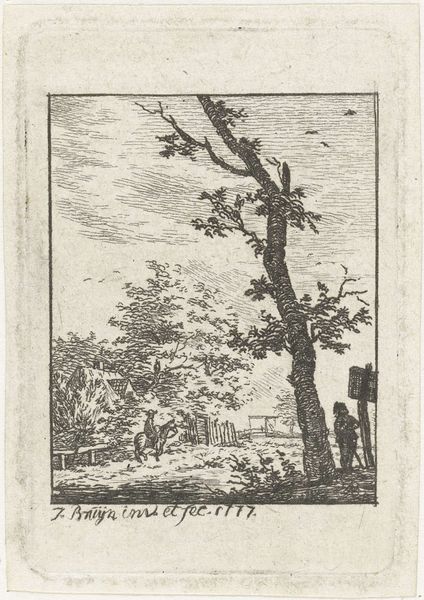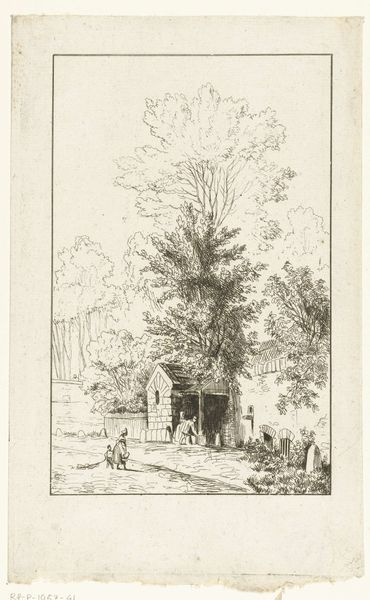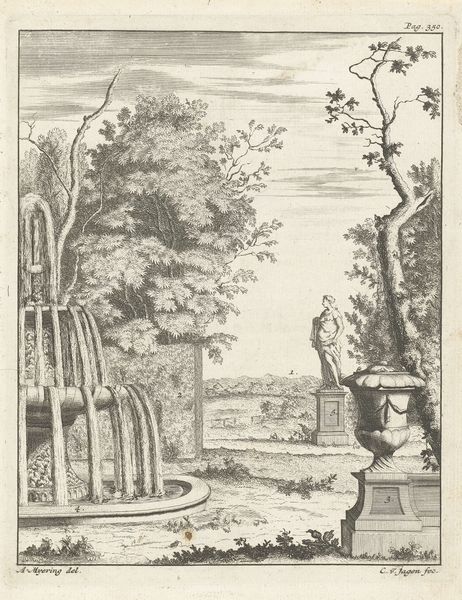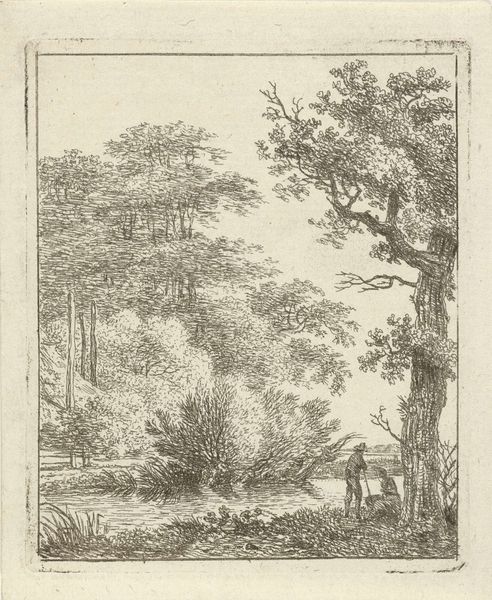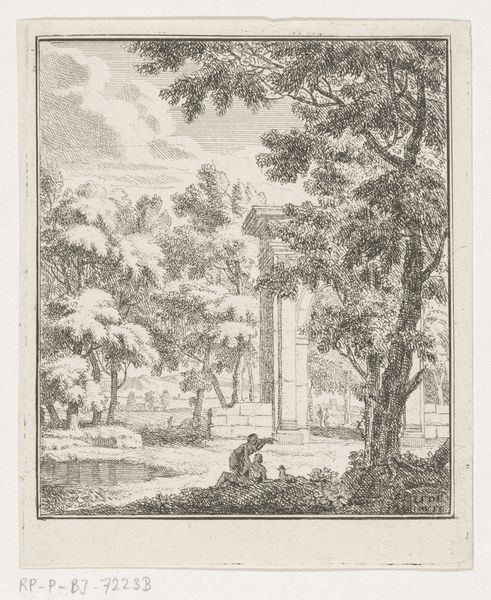
drawing, etching, ink
#
drawing
#
etching
#
landscape
#
figuration
#
ink
Dimensions: height 80 mm, width 60 mm
Copyright: Rijks Museum: Open Domain
Editor: So, this etching, "Man met kruiwagen lopend door hek," from between 1778 and 1838, by Anthonie van den Bos… It feels very much of its time, very grounded. I see a man pushing a wheelbarrow through a gate, the landscape dominating the composition. What do you see in this piece, beyond the surface imagery? Curator: I see more than just a landscape; I see a commentary on labor and social mobility during a period of immense change. The man with the wheelbarrow, framed by the gate, suggests a transition. But is it a transition towards progress or continued subjugation? Consider the social upheavals of the late 18th and early 19th centuries. Does the gate represent opportunity or confinement, and for whom? Editor: That’s interesting. I hadn't considered the gate as symbolic beyond just… a gate. Is the figure’s posture relevant? He seems burdened, almost stooped. Curator: Exactly! That stoop tells a story. Think about the historical context: the rise of industrialism, displacement of rural populations, and the exploitation of labor. Is this man a landowner, a displaced farmer seeking work, or simply a transient figure caught between worlds? The landscape, seemingly pastoral, might actually be hinting at socio-economic pressures. Who benefited from the agrarian changes? Whose labor built these landscapes? Editor: So, it's less about the idyllic scene and more about questioning who has access to that idyll and at what cost? Curator: Precisely! And by examining the work through the lens of social and economic power structures, we uncover deeper meaning and a critique relevant even today. Editor: That gives me a lot to think about. I’ll never look at a gate the same way again. Curator: Wonderful. That’s the power of art; it prompts us to question our assumptions and engage with the world in new and meaningful ways.
Comments
No comments
Be the first to comment and join the conversation on the ultimate creative platform.

